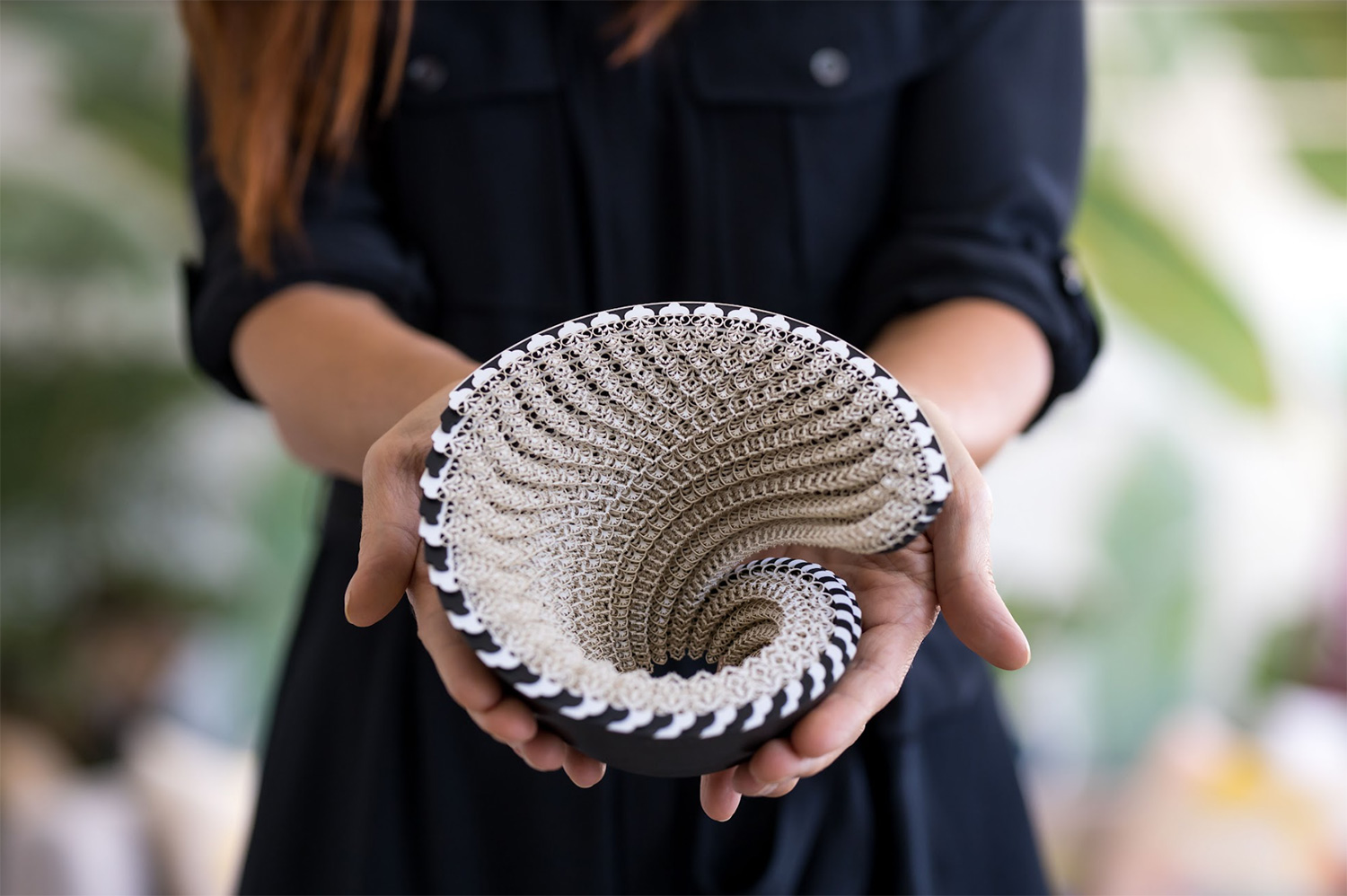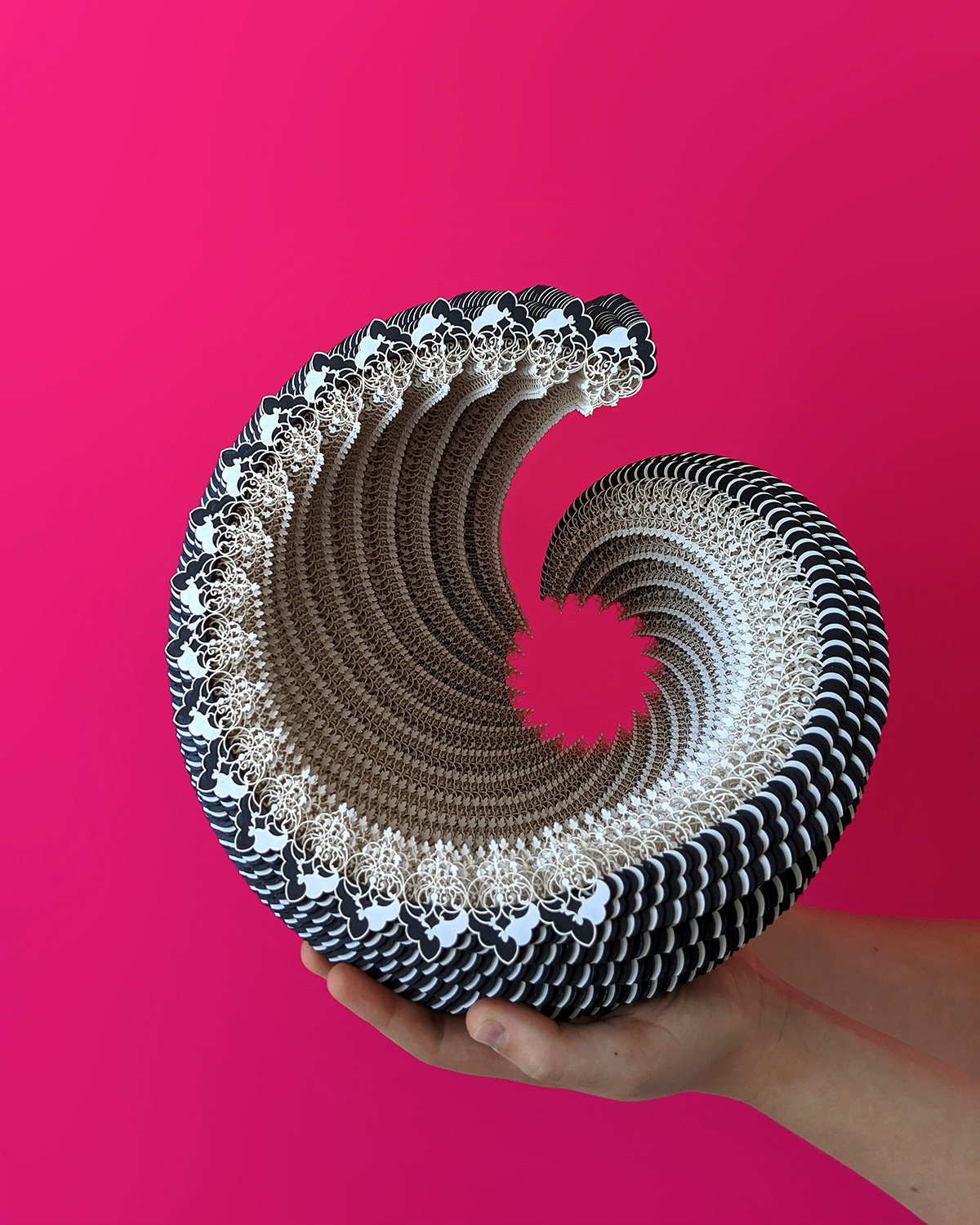5 Questions with Artist Julia Ibbini
Feb 15, 2023
When our friends at Long-Sharpe Gallery told us about Abu Dhabi-based Ibbini Studio, we were intrigued to learn more. So, we chatted with Julia Ibbini about how she explores historical ornament using algorithms and new technologies to create intricate works that intersect art, design and engineering. The practice is a collaborative effort between herself and Stéphane Noyer, who she has worked with since 2017. While Julia is a visual artist and designer, with a background in graphics and collage, Stéphane is a computer scientist and maker, with an interest in computational geometry. We dug a little further…
1AN: What inspired you to pursue art?
JI: I’ve never wanted to do anything else other than be an artist, but I worked in marketing for over a decade before I was able to move into making art full-time in my 30’s.
1AN: I love that you followed your dreams! Your work is so visually complex. How do you describe your art to people who've never seen it before?
JI: My work explores ornament and pattern using algorithms and new technologies to create works that intersect art, craft, design and engineering. The work is a collaborative effort with Stéphane Noyer who is a computer scientist and engineer.
The pieces we make combine contemporary digital design and traditional craftsmanship with extreme detailing, using algorithms and new technologies. A specific focus is the creation of visual complexity, either through repetition of simple motifs, elaborate geometric construction, or accumulation of ornamental detail in order to create high levels of intricacy.
We use materials such as paper, veneer woods or mother of pearl - selected for their delicate, tactile qualities - that are then layered and meshed together using a complex collaging method, with individual projects taking up to a year to complete.
1AN: Yeah, you definitely seem to test the limits of possibilities in collage and construction with your work. What does it aim to say?
JI: It’s mostly about exploring the spaces between certain fields of interest; between mathematics and visual art, engineering and craft, machine versus hand-made.
For example, we recently began a new series of sculptures that play on the idea of developable surfaces. Developable surfaces are a mathematical concept that describes how flat sheet material can be rolled or curved in three dimensional shapes and is traditionally used in areas such as industrial manufacturing, boat building or cartography.
We used developable surfaces to design and build a sculptural prototype out of layered, laser cut papers, using a very large amount of computational geometry, custom developed software scripts, custom 3d printed forms, customised laser machines and experimental collaging methods to build the end result by hand.
1AN: Considering this, your works really are extremely intricate and precise, pushing the boundaries of materials in unusual ways. But how has your approach and process changed over time?
JI: I am always playing with how far I can push boundaries and ideas creatively, while Stéphane focuses on engineering quality. As a result, there is an ongoing increase in both the complexity of the pieces and the technology we are working with; it’s an endless learning curve.
1AN: So, with all of this learning, what does a day at your studio look like?
JI: I’m an early riser so things typically get going at about 7am.
We arranged our studio into 4 areas: a workshop space for the laser machines, an office area for the computers, a clean build space (where all the pieces are assembled) and a photography studio. I’m generally on the move between the four spaces throughout the day.
I always work on a mix of several pieces/projects at once and it’s about nudging each one forward towards completion each day.
1AN: And as a bonus, mainly because I’m dying to know, what has been the highlight of your career?
JI: Mostly the fact that I get to do this every day. Being a creative person in any field is incredibly difficult on so many levels, but also deeply rewarding in ways I could never have imagined.
Read more about Julia here.

:sharpen(level=0):output(format=jpeg)/wp-content/uploads/2023/02/5-Questions-with-Artist-Julia-Ibbini.jpg)





:sharpen(level=1):output(format=jpeg)/wp-content/uploads/2024/05/The-Art-Lawyers-Diary-1.jpg)
:sharpen(level=1):output(format=jpeg)/wp-content/uploads/2024/04/5-Questions-with-Bianca-Cutait-part-2-1.jpg)
:sharpen(level=1):output(format=jpeg)/wp-content/uploads/2024/05/20231208_164023-scaled-e1714747141683.jpg)
:sharpen(level=1):output(format=jpeg)/wp-content/uploads/2024/04/header.jpg)
:sharpen(level=1):output(format=jpeg)/wp-content/uploads/2024/04/5-Questions-with-Bianca-Cutait-part-1-1.jpg)
:sharpen(level=1):output(format=jpeg)/wp-content/uploads/2024/03/5-Questions-with-Alaina-Simone-1.jpg)